Edited volumes by Magdalena Herman
This book examines the early development of the graphic arts from the perspectives of material th... more This book examines the early development of the graphic arts from the perspectives of material things, human actors and immaterial representations while broadening the geographic field of inquiry to Central Europe and the British Isles and considering the reception of the prints on other continents.
The role of human actors proves particularly prominent, i.e. the circumstances that informed creators’, producers’, owners’ and beholders’ motivations and responses. Certainly, such a complex relationship between things, people and images is not an exclusive feature of the pre-modern period’s print cultures. However, the rise of printmaking challenged some established rules in the arts and visual realms and thus provides a fruitful point of departure for further study of the development of the various functions and responses to printed images in the sixteenth century.
Papers by Magdalena Herman
This book examines the early development of the graphic arts from the perspectives of material th... more This book examines the early development of the graphic arts from the perspectives of material things, human actors and immaterial representations while broadening the geographic field of inquiry to Central Europe and the British Isles and considering the reception of the prints on other continents. The role of human actors proves particularly prominent, i.e. the circumstances that informed creators’, producers’, owners’ and beholders’ motivations and responses. Certainly, such a complex relationship between things, people and images is not an exclusive feature of the pre-modern period’s print cultures. However, the rise of printmaking challenged some established rules in the arts and visual realms and thus provides a fruitful point of departure for further study of the development of the various functions and responses to printed images in the sixteenth century.
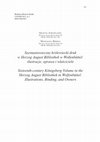
Biuletyn Historii Sztuki, 2021
Sixteenth-century Königsberg Volume in the Herzog August Bibliothek in Wolfenbüttel: Illustration... more Sixteenth-century Königsberg Volume in the Herzog August Bibliothek in Wolfenbüttel: Illustrations, Binding, and Owners
In the paper the unique copy of Arsatius Seehofers postil in the Polish translation by Eustachy Trepka is discussed; printed by Hans Daubmann in Königsberg in 1556, it is currently in the Herzog August Bibliothek in Wolfenbüttel. It remains unclear under what circumstances the volume reached the library, still it ranks among the most precious Poland-related items in the original collection of August zu Braunschweig-Lüneburg. Furthermore, being the only to-date identified copy of Seehofer/Trepkas postil from 1556, it allows to analyse the programme of illustrations of
the edition. A series of prints, in majority modelled on Hans Brosamers compositions, reveal Daubmanns strategy as far as acquiring and using woodblocks brought from Nuremberg in 1554 are concerned. The 16th-century binding, in its turn, a work of the bookbinder Melchior Nering
from Greater Poland, as well as written sources, provide insight into certain aspects of the distribution of Seehofer/Trepkas postil outside Prussia. They also make one wonder who the first owners of the copy were; the latter, regrettably, to-date unidentified.
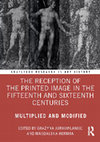
Multiplied and Modified. The Reception of the Printed Image in the Fifteenth and Sixteenth Century, ed. by Grazyna Jurkowlaniec and Magdalena Herman, 2020
A set of engravings depicting the Four Elements was made in 1586 after the drawings of Hendrick G... more A set of engravings depicting the Four Elements was made in 1586 after the drawings of Hendrick Goltzius. The four fundamental elements, Earth, Water, Fire and Air, are personified by allegorical male and female figures. Both the attributes surrounding the large naked figures and biblical scenes in the background refer to the respective elements. These background scenes served for Goltzius to link the elements with the religious sphere: in the spirit of contemporary Paracelsian theory, he identified the stages of alchemistic transfiguration of the four elements with the phases of religious purification. The engravings are supplemented with inscriptions in Latin that describe the cosmic role of each element.
With his plates Goltzius probably intended to target a distinguished audience of collectors with humanist erudition. However, the popularity of his series happened to reach far beyond the cultural high society. Clearly, it was the employment of his figures as decoration to Willem Blaeu’s famous Map of the World that quickly earned the engravings a broad recognition. With Blaeu’s map certainly being the most influential of all, the figures of Goltzius were borrowed for innumerable other works of art in diverse genres. Still in the 17th century they appeared, among others on Engleish faience, French cupboards, German stove tiles and ornament prints from the Low Countries. It should nevertheless be born on mind that the figures, removed from their original web of relations, deprived of their backgrounds scenes and explanatory inscriptions, and endowed with a new function and iconographic programme, found themselves in a completely different context, e.g. in the case of Blaeu’s map.
The aim of the study is to demonstrate through a rich collection of examples how the figures of Goltzius were adapted in both form and content to fit the various genres, functions, materials and techniques.
Print Culture at the Crossroads. The Book and Central Europe, eds. Elizabeth Dillenburg, Howard Louthan, and Drew B. Thomas, 2021
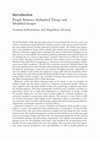
The Reception of the Printed Image in the Fifteenth and Sixteenth Centuries. Multiplied and Modified, 2020
Printed images were, on one hand, material objects produced, owned or variously transformed by hu... more Printed images were, on one hand, material objects produced, owned or variously transformed by humans, but on the other hand, they were immaterial representations, conceived and variously received by humans as well. Certainly, such a complex relationship among things, people and images is not an exclusive feature of the premodern period’s print cultures. However, the rise of printmaking challenged some established rules in the arts and visual realms. Three short insights may exemplify this rise of printmaking. The first insight’s point of departure comprises material objects related to Lucas Cranach the Elder’s early Crucifixion; the second insight offers a human perspective, starting with Christophe Plantin’s working practices; and the third insight is a short story that emphasises the ambiguities surrounding what printed images represent, as epitomised by early modern depictions of wisent, a species related to the North American bison, but often confused with the Eastern European aurochs.

Z Badań nad Książką i Księgozbiorami Historycznymi, 2019
The ownership marks of the books and print albums that belonged to Jan Ponętowski (c. 1540-1598) ... more The ownership marks of the books and print albums that belonged to Jan Ponętowski (c. 1540-1598) have already been studied extensively. Thus, this article presents hitherto unconsidered aspects of the bibliophile’s armorial marks with emphasis on written sources and the interchangeable use of the Ogończyk and Odrowąż coats of arms for his bookplates, supralibros, seals, medal with his portrait and his crosier. It investigates why Ponętowski employed the Odrowąż with the emblem of the Order of the Dragon, and by focussing on the literary sources of the relation between the dragon and salamander, which were depicted on an armorial bookplate, the article accentuates Ponętowski’s self-invention and seemingly compound heraldic usurpation. Key words: Jan Ponętowski, bookplate, supralibros, Odrowąż, Ogończyk, salamander, Hradisko, heraldry, heraldic usurpation, Order of the Dragon, Kraków, Olomouc.

Investigation and Conservation of East Asian Cabinets in Imperial Residences (1700–1900), 2017
Count Stanisław Kostka Potocki (1755–1821) created the “Chinese Rooms” at the Wilanów Palace. The... more Count Stanisław Kostka Potocki (1755–1821) created the “Chinese Rooms” at the Wilanów Palace. The apartment, consisting of five stylistically coherent rooms, aimed to present a collection of Chinese art to the public. The walls, decorated in the “print room” style, were covered with export wall papers, paintings on paper and silk, as well as nianhua prints. Local artists hired by the Wilanów owners adorned them with the chinoiserie borders. During a post-war conservation project in the 1950s, the decision to reveal heretofore-unknown baroque decoration was made in order to restore the earliest state of the residence. The Chinese decor was dismounted from the walls, underwent conservation and has since been kept in the museum storage. This paper focuses on selected results of a funded three-year project from 2011 to 2014, such as the history of Potocki’s Chinese Rooms, correlations between various Chinese cabinets in Europe, the identification of technologies and techniques of mounting.
https://doi.org/10.7767/9783205207139.47
Artisti dei laghi lombardi nell'Europa moderna. Studi dedicati alla memoria del Prof. Mariusz Karpowicz, red. R. Sulewska, M. Smoliński, 2015
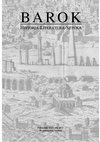
„Barok. Historia – Literatura – Sztuka”, 2013
Stanisław Herakliusz Lubomirski left for Rome on 7 January 1687. His journey was motivated chiefl... more Stanisław Herakliusz Lubomirski left for Rome on 7 January 1687. His journey was motivated chiefly by political reasons related to his opposition activity against King John III Sobieski. The itinerary, made public in 1688, included meetings with the emperor, the Venetian doge, Queen Eleanor and Charles of Lorraine, and Pope Innocent XI. Of cially, according to Lubomirski, the journey was the ful lment of his holy vow to make a pilgrimage to the graves of the Apostles. There are many indications that Stanisław Lubomirski had intended to pilgrimage “ad Limina Apostolorum” for a long time. The final decision to go in January was taken suddenly, but the court circles had been notified of his intention in advance. The Marshall travelled in a hurry, on horseback, and without any retinue. He arrived in Venice before 19 January, between 6 and 15 March he entered Rome, and was back in Poland before 13 April 1687. He brought along the most important elements for the interior decoration of the church he was building at that time at Czerniaków: a painting of St. Anthony of Padua and the relics of St. Boniface given him by the pope. The effigy of St. Anthony was alleged to be rescued from a large re in Venice. This miraculous occurrence is depicted in the fresco in the presbytery. It is possible that the actual re that broke out in Venice shortly before the Marshal’s visit to the city (in July 1686) was inspiration source of the effigy’s legend. The relationship between the furnishing and decorating of the church and the
founder’s pilgrimage seems to legitimise a pious purpose of his journey for which he was reproached during the Sejm campaigns afterwards. Political and religious motives of his journey were strongly intermingled. Also the church at Czerniaków, most frequently recalled when referring to the religious character of his travel, requires a new look from a changed, worldly perspective – also a political one.
Sztuka w kręgu krakowskich dominikanów, red. A. Markiewicz, M. Szyma, M. Walczak, 2013
Na okładce wykorzystano inicjał I ze św. Dominikiem z graduału brata Wiktoryna z 1536 r., k. 80; ... more Na okładce wykorzystano inicjał I ze św. Dominikiem z graduału brata Wiktoryna z 1536 r., k. 80; Archiwum Dominikanów w Krakowie.
Conference Presentations by Magdalena Herman
29.06-1.07.2017, The Printed Book in Central Europe, University of St Andrews, University of Min... more 29.06-1.07.2017, The Printed Book in Central Europe, University of St Andrews, University of Minnesota
6-8.04.2017, The Annual Art History Conference (Association of Art Historians), Prints in Books: ... more 6-8.04.2017, The Annual Art History Conference (Association of Art Historians), Prints in Books: The Materiality, Art History and Collection of Illustrations
12-13.02.2016, Placing Prints: New Developments in the Study of Print, 1400-1800, Courtauld Inst... more 12-13.02.2016, Placing Prints: New Developments in the Study of Print, 1400-1800, Courtauld Institute of Art
Conference & Seminar Organisation by Magdalena Herman
3-4 April 2014, Institute of Art History, University of Warsaw and Wilanów Museum Palace
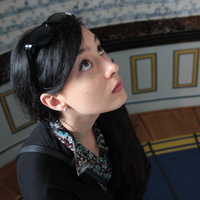


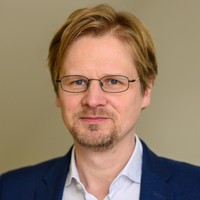



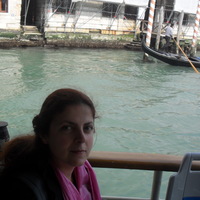
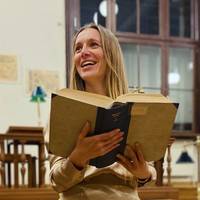

Uploads
Edited volumes by Magdalena Herman
The role of human actors proves particularly prominent, i.e. the circumstances that informed creators’, producers’, owners’ and beholders’ motivations and responses. Certainly, such a complex relationship between things, people and images is not an exclusive feature of the pre-modern period’s print cultures. However, the rise of printmaking challenged some established rules in the arts and visual realms and thus provides a fruitful point of departure for further study of the development of the various functions and responses to printed images in the sixteenth century.
Papers by Magdalena Herman
In the paper the unique copy of Arsatius Seehofers postil in the Polish translation by Eustachy Trepka is discussed; printed by Hans Daubmann in Königsberg in 1556, it is currently in the Herzog August Bibliothek in Wolfenbüttel. It remains unclear under what circumstances the volume reached the library, still it ranks among the most precious Poland-related items in the original collection of August zu Braunschweig-Lüneburg. Furthermore, being the only to-date identified copy of Seehofer/Trepkas postil from 1556, it allows to analyse the programme of illustrations of
the edition. A series of prints, in majority modelled on Hans Brosamers compositions, reveal Daubmanns strategy as far as acquiring and using woodblocks brought from Nuremberg in 1554 are concerned. The 16th-century binding, in its turn, a work of the bookbinder Melchior Nering
from Greater Poland, as well as written sources, provide insight into certain aspects of the distribution of Seehofer/Trepkas postil outside Prussia. They also make one wonder who the first owners of the copy were; the latter, regrettably, to-date unidentified.
With his plates Goltzius probably intended to target a distinguished audience of collectors with humanist erudition. However, the popularity of his series happened to reach far beyond the cultural high society. Clearly, it was the employment of his figures as decoration to Willem Blaeu’s famous Map of the World that quickly earned the engravings a broad recognition. With Blaeu’s map certainly being the most influential of all, the figures of Goltzius were borrowed for innumerable other works of art in diverse genres. Still in the 17th century they appeared, among others on Engleish faience, French cupboards, German stove tiles and ornament prints from the Low Countries. It should nevertheless be born on mind that the figures, removed from their original web of relations, deprived of their backgrounds scenes and explanatory inscriptions, and endowed with a new function and iconographic programme, found themselves in a completely different context, e.g. in the case of Blaeu’s map.
The aim of the study is to demonstrate through a rich collection of examples how the figures of Goltzius were adapted in both form and content to fit the various genres, functions, materials and techniques.
https://doi.org/10.7767/9783205207139.47
founder’s pilgrimage seems to legitimise a pious purpose of his journey for which he was reproached during the Sejm campaigns afterwards. Political and religious motives of his journey were strongly intermingled. Also the church at Czerniaków, most frequently recalled when referring to the religious character of his travel, requires a new look from a changed, worldly perspective – also a political one.
Conference Presentations by Magdalena Herman
Conference & Seminar Organisation by Magdalena Herman
The role of human actors proves particularly prominent, i.e. the circumstances that informed creators’, producers’, owners’ and beholders’ motivations and responses. Certainly, such a complex relationship between things, people and images is not an exclusive feature of the pre-modern period’s print cultures. However, the rise of printmaking challenged some established rules in the arts and visual realms and thus provides a fruitful point of departure for further study of the development of the various functions and responses to printed images in the sixteenth century.
In the paper the unique copy of Arsatius Seehofers postil in the Polish translation by Eustachy Trepka is discussed; printed by Hans Daubmann in Königsberg in 1556, it is currently in the Herzog August Bibliothek in Wolfenbüttel. It remains unclear under what circumstances the volume reached the library, still it ranks among the most precious Poland-related items in the original collection of August zu Braunschweig-Lüneburg. Furthermore, being the only to-date identified copy of Seehofer/Trepkas postil from 1556, it allows to analyse the programme of illustrations of
the edition. A series of prints, in majority modelled on Hans Brosamers compositions, reveal Daubmanns strategy as far as acquiring and using woodblocks brought from Nuremberg in 1554 are concerned. The 16th-century binding, in its turn, a work of the bookbinder Melchior Nering
from Greater Poland, as well as written sources, provide insight into certain aspects of the distribution of Seehofer/Trepkas postil outside Prussia. They also make one wonder who the first owners of the copy were; the latter, regrettably, to-date unidentified.
With his plates Goltzius probably intended to target a distinguished audience of collectors with humanist erudition. However, the popularity of his series happened to reach far beyond the cultural high society. Clearly, it was the employment of his figures as decoration to Willem Blaeu’s famous Map of the World that quickly earned the engravings a broad recognition. With Blaeu’s map certainly being the most influential of all, the figures of Goltzius were borrowed for innumerable other works of art in diverse genres. Still in the 17th century they appeared, among others on Engleish faience, French cupboards, German stove tiles and ornament prints from the Low Countries. It should nevertheless be born on mind that the figures, removed from their original web of relations, deprived of their backgrounds scenes and explanatory inscriptions, and endowed with a new function and iconographic programme, found themselves in a completely different context, e.g. in the case of Blaeu’s map.
The aim of the study is to demonstrate through a rich collection of examples how the figures of Goltzius were adapted in both form and content to fit the various genres, functions, materials and techniques.
https://doi.org/10.7767/9783205207139.47
founder’s pilgrimage seems to legitimise a pious purpose of his journey for which he was reproached during the Sejm campaigns afterwards. Political and religious motives of his journey were strongly intermingled. Also the church at Czerniaków, most frequently recalled when referring to the religious character of his travel, requires a new look from a changed, worldly perspective – also a political one.